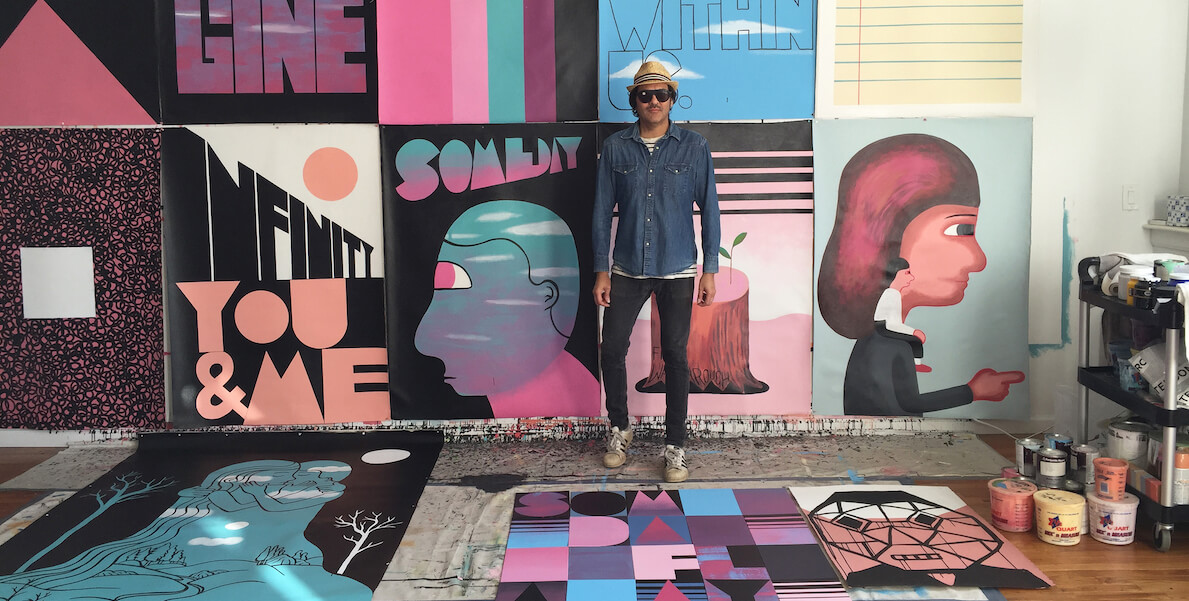Since landing his first illustration gig at Sydney Morning Herald as a teenager, Jeremy Ville, now much better known as “Jeremyville,” has experienced what appears to be a charmed career. Over the past two two decades, he’s built a cartoon universe whose characters explore everything from love and loss to the natural world and the power of a good song to incredible success.
Jeremyville has exhibited across the world and collaborated with international brands. He’s designed for Khiels; has both his own Swatch watch and a Hugo Boss capsule collection. Just last month, he unveiled a series of more than a dozen large-scale sculptures with Lululemon in Shanghai.
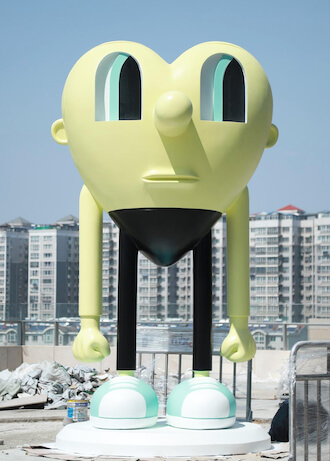
But spend a few minutes with the man, and you will discover that success was a matter of blood, sweat and tears. He gave himself no other choice but to work his way to the top, developing a system of art-making and licensing that resembles the flywheel effect — a concept more popular in the world of venture capital than creative endeavors.
Even the pseudonym speaks to the expansive way that the artist operates. Yes, there is a man who responds to the name Jeremyville and the creative ideas start there, but there is more to it than that. The Jeremyville studio has staff from Philly to Sydney, with three core members and project-based staff that can swell to dozens of assistants, depending on what they’re working on. Jeremyville is an imaginary town populated by thousands of characters; it’s the team that brings those ideas into being; it’s even the conceptual space where all of his collaborators play. Jeremyville may not be quite as comprehensive as the Marvel Cinematic Universe, but it’s not dissimilar.
After a stint in New York City, the Aussie now calls Philadelphia home. In true Philly fashion, one of this city’s most successful and influential artists has kept his residence on the down low. Unless you’re a regular at the Fishtown cafes that Jeremyville frequents to sketch out his early concepts, you’re unlikely to know that this city is sleeping on one of our greatest (now) local talents.
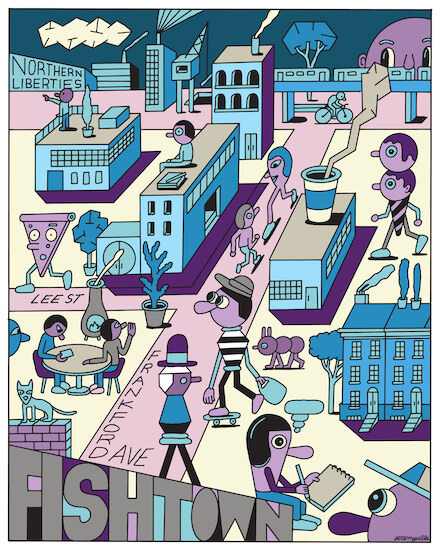
As part of a partnership with Forman Arts Initiative, the Citizen caught up with Jeremyville. The interview has been condensed and edited for clarity.
RJ Rushmore: You first visited Philadelphia only a few years ago, and you quickly went all-in on the city, relocating your art studio from Manhattan to Fishtown. What drew you here?
Jeremyville: My art practice, and philosophy in life, is all about making real connections.
When I had my studio in SoHo NYC, I had very few genuine connections with people. Fishtown, on the other hand, is a very real, vibrant community, with a creative vibe, genuine people and an atmosphere I really love. In the end, life is all about a feeling, and I got that straight away when I first visited Fishtown.
I only visited for the first time in 2020, but I think if I had seen Philly earlier, I’d have moved here sooner. I just didn’t know. When I moved to the U.S. from Sydney, Australia, New York seemed like the place to establish our studio. But now, with our studio in full swing and clients around the world, the place where you live and work can be anywhere. And I choose Philly.

You are one of the hardest-working people I know, and you’ve occasionally reminded me that you’ve never had any sort of 9-5 job. From the moment you left school, you have been hustling to survive off of your artwork. Why is that distinction important to you, and what has that meant for your life and career?
Still hustling! Yes I’ve never had a real job, I graduated from Sydney University with an architecture degree. I never went to art school, and I’m glad I didn’t. My greatest teachers have been my own struggles and mistakes, and my own passion to make a living from art. I wanted to remove any safety net away from my journey through art, with no backup plan if it didn’t work out. So I never worked any other job. Just art. No parent’s trust fund or government handouts, just my pen, my ambition and sheer hard work, day in, day out. If it’s your only way to be able to eat and pay for a roof over your head, you sure better make it work, or die trying.
Every day, my goal is to get better at art, to keep the engine of the studio going, and make art my life.
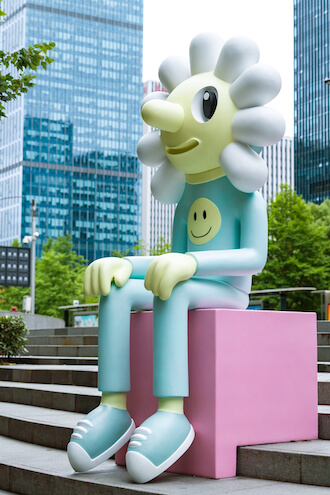
The Jeremyville universe has expanded to include paintings, prints, sculptures, fashion collections, animation, and much more. It can seem limitless. Does that range ever get overwhelming?
My mind has learnt to compartmentalize and focus on one thing as I’m doing it, then quickly shift focus to the next project. In one day, I might work two to three hours each on four to five projects. Our studio chooses projects very carefully, and we have at least 12 projects in progress at any one time. I always secretly tell myself I’m at about 8 percent of my productivity, that I can create and achieve much, much more.
Right now, our studio is focused on a huge outdoor sculpture and interactive project in Shanghai. We also have a watch project in London, an edition of wooden sculptures out of Copenhagen, an eyewear brand collaboration in New York, a suite of lithographs with a print house in Paris, a series of three books, a project with Paramount, and several more licensing projects. That’s just top of mind.
How do you balance the demands of collectors, clients, your team and your own creative impulses?
I draw whenever I can: on the Amtrak, at the studio, in a hotel room, and even in my dreams. When our studio gets busy with client projects, I need to actively carve chunks out of time to just be left alone to create self-initiated art. That’s the trade-off. Hence the Philly studio, a large loft somewhere in Fishtown. It’s my Bruce Wayne bat cave. I can’t complain though. I’ve worked my whole adult life to get to this point, and I just need to make it all work. There is no other option.
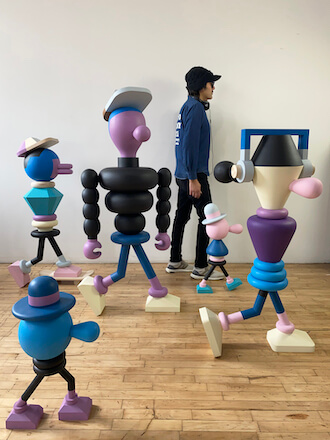
Your work is exhibited in traditional art galleries and museums, but you’ve also installed giant sculptures in public spaces, painted murals and designed product packaging. Do you see a distinction between those different platforms?
Each project has its own set of parameters, its own constraints. I love the creative and logistical tussles along the way. The challenge is to maintain the integrity of the idea, amidst input from clients, site specific limitations and a host of other variables that could affect the way the original idea manifests itself.
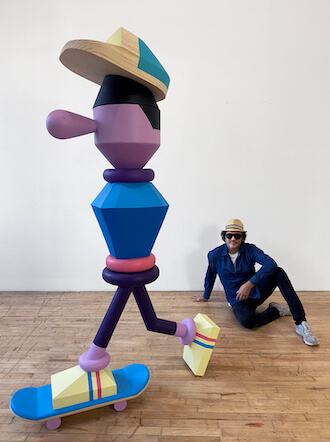
Who is the Jeremyville audience?
Anyone on earth who connects deeply and genuinely with our message. I leave half opened doorways within the work, quiet invitations to enter, to add your own story to the piece. Our audience completes the piece of art.
Much of your work, especially the Community Service Announcements (CSA) series, expresses some essential truth in a straightforward way. That is a fine line to walk without falling into over saccharine territory. How do you strike that balance?
My internal brief for the Community Service Announcements was to act like the mayor of a place called Jeremyville. I imagined commissioning a series of posters to hang around an imaginary town, encouraging us all to become better people and creating tiny ripples of change in the community. Each message should be as simple as possible, something you’d be able to get while quickly driving past it or seeing it on a street. That was in 2010, and today we have about 5,000 CSA messages. I’ll be drawing them forever, because the human condition is infinite.
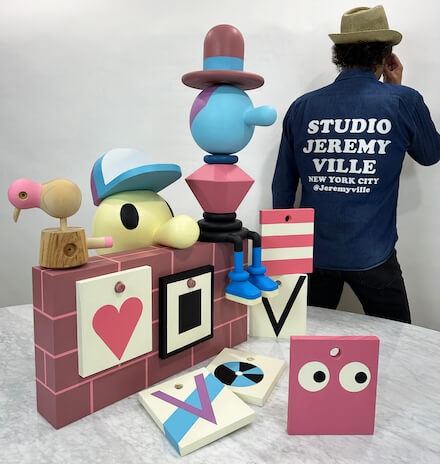
Of course, this is not all that our studio does. The CSA messages are like our pop songs, our Beatles’ Love Me Do, while other projects might be like our Strawberry Fields Forever. I don’t feel restricted to only one way of telling a story, as long as the art always comes from a place of truth.
I’ve never seen you leave your house without at least a small sketchbook. Other than your own studio, where is your favorite place to draw?
I love any cafe where I can open my sketchbook and contemplate life for a while. Cafes are for dreaming. I love Gilda’s on Girard Ave. Milkcrate Cafe is great too, if I’m in a Lou Reed kind of mood. At Gryphon Cafe, I can hear myself think. La Colombe gets pretty crowded, so I only choose certain times to go there. I love Persimmon Coffee, where it’s lovely to see the owners Kai and Sawyer working their magic at the coffee machine. ReAnimator is great too.
Community is everything, and cafes create that feeling of a place where we all belong. That feeling of community and togetherness is also what our studio has tried to build, within a place called Jeremyville.
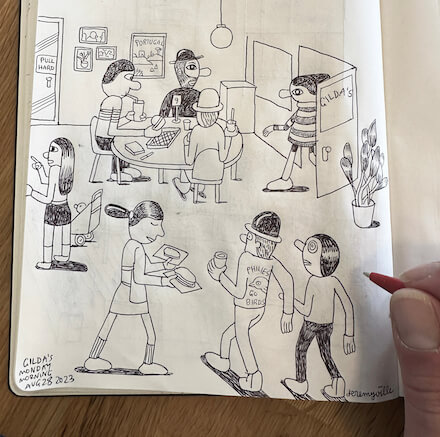
RJ Rushmore is a writer, curator and public art advocate. He is the founder of the street art blog Vandalog and culture-jamming campaign Art in Ad Places. As a curator, he has collaborated with Poster House, Mural Arts Philadelphia, The L.I.S.A. Project NYC and Haverford College. Rushmore’s writing has appeared in Hyperallergic, Juxtapoz, Complex and numerous books. He holds a B.A. in Political Science from Haverford College, where his thesis investigated controversies in public art.
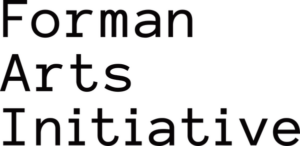 This story is part of a partnership between The Philadelphia Citizen and Forman Arts Initiative to highlight creatives in every neighborhood in Philadelphia. It will run on both The Citizen and FAI’s websites.
This story is part of a partnership between The Philadelphia Citizen and Forman Arts Initiative to highlight creatives in every neighborhood in Philadelphia. It will run on both The Citizen and FAI’s websites.
![]()
MORE ARTS COVERAGE FROM THE PHILADELPHIA CITIZEN



